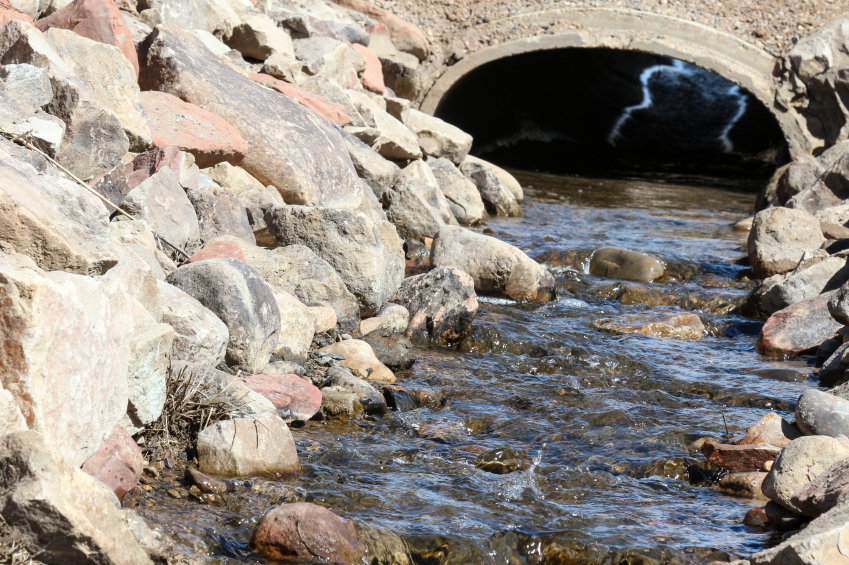 |
Here’s the Problem
About 700 U.S. cities, concentrated in the Northeast, the Great Lakes region, and the Pacific Northwest, have combined sewer systems (CSSs). CSSs link sanitary sewers and stormwater conveyances to outfalls to surface water bodies. When the weather is dry or moderately wet, the CSS carries both urban street runoff and sanitary sewage to wastewater treatment plants. During extreme wet weather, the capacities of the plant are overwhelmed, and the combined and untreated flows are diverted to surface waters.
So what, you say? Well, according to the EPA, raw sewage in CSOs has contributed to beach closures, contamination of drinking water supplies, and other environmental and public health concerns. In a 2004 report to Congress, the EPA estimated that each year about 850 billion gallons of untreated wastewater and stormwater are released as CSOs.
The EPA has estimated that inventoried CSSs have about 9,000 outfalls into surface waters.
The Environmental “Red Book”™ from BLR is the tried and true solution for state EPA regulation compliance, relied on by thousands of companies for over 20 years. Learn more.
What EPA Has Done—Stayed Gray through NPDES
In the mid-1990s, the EPA developed a CSO Control Policy to control discharges from CSOs through the National Pollutant Discharge Elimination System (NPDES) permit program. Under their NPDES permits, communities are required to implement nine minimum controls (NMCs) and to develop and implement Long Term Control Plans (LTCPs).
Many communities have attempted to address CSOs through “gray” infrastructure. Gray infrastructure refers to traditional stormwater engineering systems such as pipes, sewers, and other structures involving concrete and steel. Off-line storage tanks, basins, or deep tunnels, which are adjacent to the sewer system and hold CSOs until the plant has the capacity to treat the overflow, are among the most commonly implemented types of gray infrastructure.
What EPA Wants to Do—Go Green
The Agency wants municipalities to “go green,” i.e., promote green infrastructure to control stormwater runoff at the facilities within watersheds for which the municipality has jurisdiction.
Green infrastructure practices mimic natural hydrologic processes to reduce the quantity and/or rate of stormwater flows into the CSS. By controlling stormwater runoff through processes such as infiltration, evapotranspiration, and capture and use (rainwater harvesting), the EPA contends that green infrastructure can help keep stormwater out of the CSS.
And, according to the Agency, green infrastructure also supports the principles of low-impact development—an approach to land development (or redevelopment) that works with nature to manage stormwater as close to its source as possible.
Environmental Compliance in [Your State]
Get expert analysis of your state environmental regulations, along with instant comparisons between federal and state environmental protection agency regulations. Every key 40 CFR topic is at your fingertips. Get it today!
Either Way, It Affects Your Wallet
Whether your municipality decides to “stay gray” or “go green,” you are looking at additional expenses as your local officials try to tame CSOs.
If your community stays gray, significant infrastructure investments are still needed to address CSOs. Although funding assistance is available from federal and state sources, local ratepayers ultimately fund most CSO control projects. That means higher taxes for you, possibly in the form of a stormwater tax, which usually taxes business at a higher rate than residential.
If your community officials decide to promote green infrastructure, there are different ways you can approach stormwater runoff. As explained in a previous Advisor, you can retrofit the gray way or possibly save money in the long run by using green infrastructure methods.
Tip: Facilities located in municipalities that have incentives to develop new, more ecological, systems have an advantage when considering greener solutions. You may be able to access grants and/or develop partnerships to build green infrastructure components, such as rain gardens or bioswales, at your facility.
